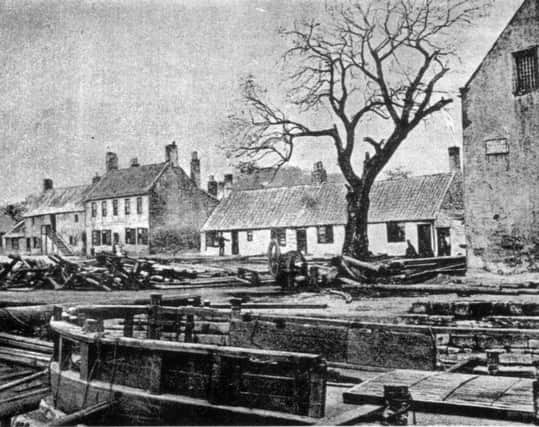Communities along the Carron doing good work


The official opening of the new bridge across the Carron at Abbotshaugh is the third new crossing of the river in recent years following the replacement of the old Dale and Dorrator bridges.
All three were inspired by the energetic work of Ian Howarth, Christine Bell and their CATCA colleagues supported by Falkirk Council and by the communities along the river.
Advertisement
Hide AdAdvertisement
Hide AdWhat pleases me especially about their activities is the emphasis they always place on local history and heritage and this latest initiative is certainly no different.
The new bridge between Langlees and Carronshore is placed at a point where Falkirk district once met the world and where the products of coal mine, foundry and farm began their water-borne journey to the Baltic, the Low Countries and beyond.
Just a few yards east of the bridge is the Pow of Abbotshaugh which was, in the 17th century and earlier, the staple port of the town where boats arrived with the claret and cloth of the continent and returned laden with exports.
In the early 18th century Thomas Dundas of Carronhall who had lots of coal to sell encouraged the development of a new port on the great loop of the Carron to the west of the new bridge and it was soon one of the busiest places in Falkirk district.
Advertisement
Hide AdAdvertisement
Hide AdThe settlement which emerged on what was then called ‘‘Coalshore’’ or ‘‘Quaroleshore’’ was renamed Carronshore and it soon boasted extensive harbour facilities as well as shipbuilding and repairs, rope-making and, to combat smuggling, a customs house known as the King’s Cellar.
But this was as nothing compared to what happened in 1759 with the opening of Carron Iron Works.
With roads almost non-existent the Forth and Carron were key avenues for raw materials in and finished goods out so the partners poured money into the village.
A stone wharf with cranes appeared to the east of the existing harbour along with a granary, workshops, a smithy, a pitchworks, a dry dock and a grandiose mansion house for the famous Charles Gascoigne, later to be Carron Company’s most powerful manager.
Advertisement
Hide AdAdvertisement
Hide AdHe controlled the new shipping company formed to look after the company’s exports and imports. The mansion, Carron House, was damaged by fire not long after Gascoigne’s departure though elements of it have survived and, with its classical features, forms a picturesque ruin facing the river.
Another survivor is the octagonal brick doocot which stands opposite the end of the new bridge. By the 1780s there were over 700 people living in houses built by the company to the north of the harbour.
At different times during the 18th century the River Carron was engineered to make it straighter and wider downstream so that much bigger vessels could reach Carronshore.
As the works prospered so did the village but the construction of the Forth and Clyde Canal from the 1770s sounded its death knell.
Advertisement
Hide AdAdvertisement
Hide AdA new port at Grangemouth meant that the lucrative west coast trade to and from Glasgow now by-passed Carronshore and soon Carron Company began using the canal to carry some of its materials.
Though the harbour declined, it continued to handle shipping throughout the 19th century but by the 1850s Carronshore’s glory days were gone.
Hopefully the new bridge will remind local people as well as visitors of the importance of this quiet place in the story of Falkirk as it turned from a rural backwater into the cradle of the industrial revolution.